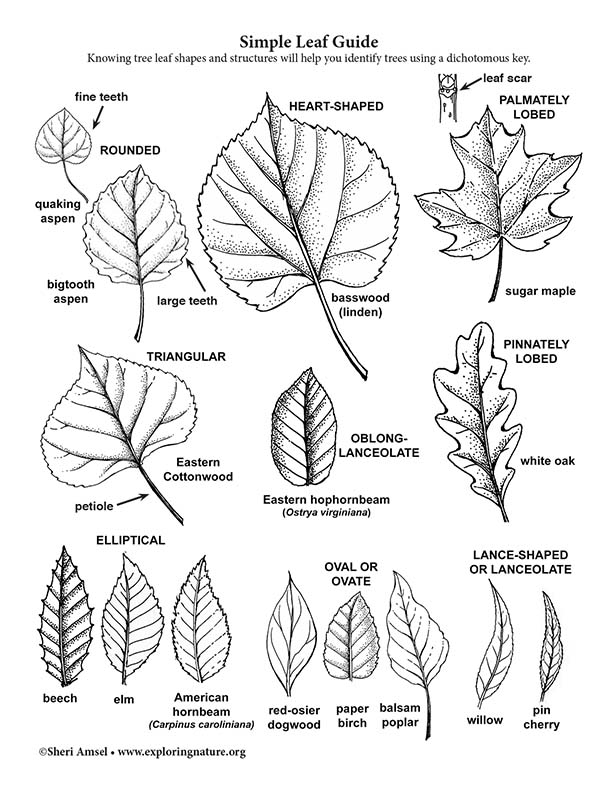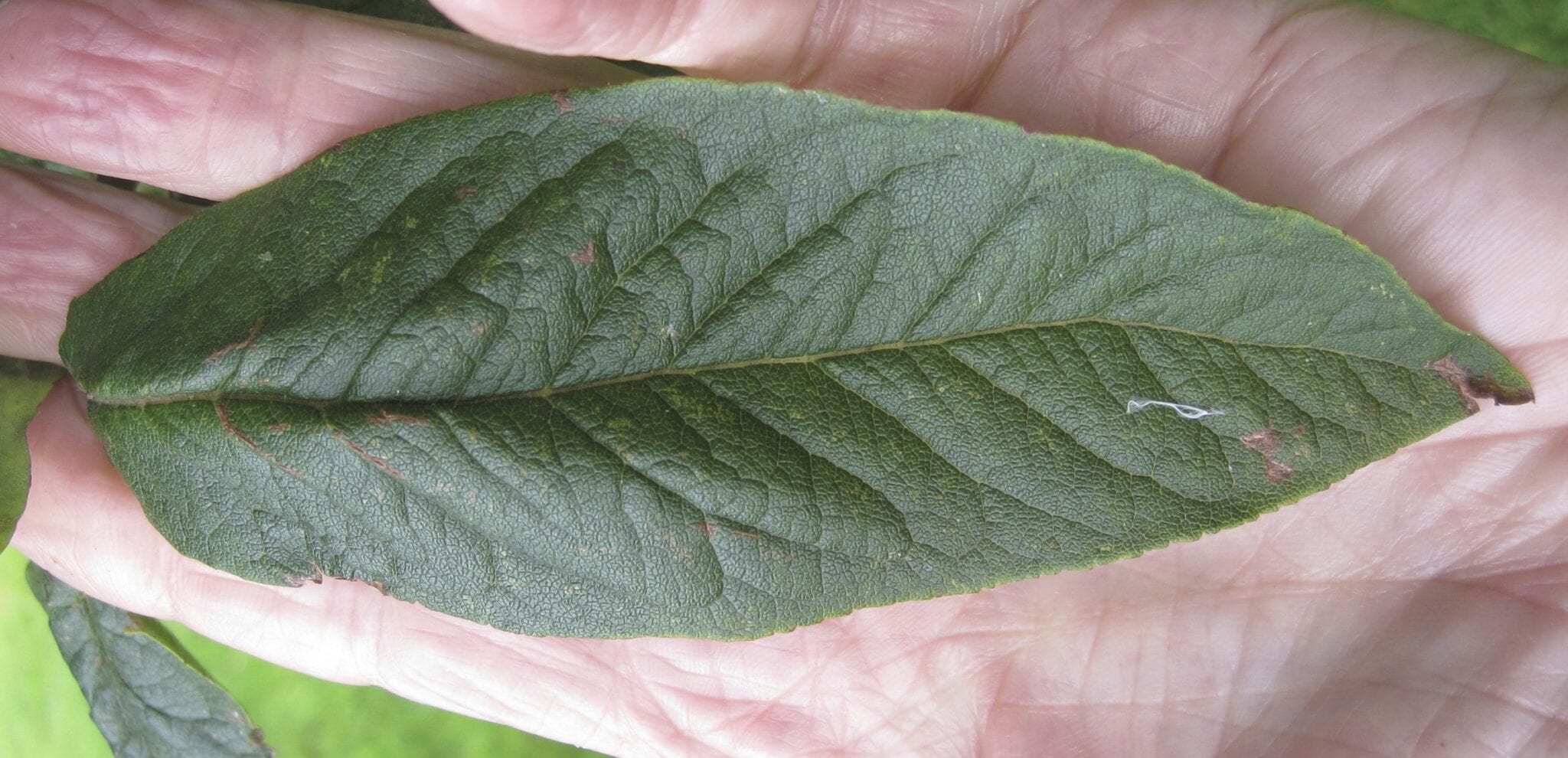

They actually were a whole different species: yew trees. I realized that they were not pine trees at all. I used to think these small, stubby, shrub-looking trees were baby pine trees, and that their needles would grow long and thin one day. Be careful when you touch them - you might get pine sap on your fingers which, although it smells amazing, will take forever to wash off. Pine trees are evergreen conifer trees, meaning that they are green all year round and bear cones instead of fruit. Pine “leaves” are actually thin needles that grow in little bunches. Cherry blossom tree leaves look very similar to elm leaves the way you can tell them apart is subtle, but you’ll see that elm leaves have more defined teeth, and are tougher than cherry blossom leaves, which are more fragile and thin. They also have a pointy tip, making the oval shape more like a teardrop. These leaves are also toothed, meaning they have jagged points all around the edges, like little teeth. In most cases, you should be able to fold a maple leaf in half down from its stem to the tip, and have both sides align perfectly.Ĭherry blossom trees, also known as sakura trees, have oval shaped leaves. The maple family falls under the genus Acer, which means “sharp” in Latin. The maple leaf, featured on the Canadian flag, is pointy and symmetrical. The picture above shows round lobed oak leaves, meaning the tree is a white oak. Red and white oaks are just different species of oak, and two of the most common ones. The difference between round and pointed is that round lobed leaves mean that the oak is a white oak, and pointed leaves mean the oak is a red oak. They have rounded or pointed “knobs” around the leaf. Oak leaves are easily identifiable because of their lobed leaves.
#Leaf guide tree identification key how to
How to Identify Trees by Their Leaves: Oak As you enjoy a walk with your dog or a meditative stroll in the crisp, cool air, you might look at the trees you pass by and say, “I wonder what the name of that tree is?” Wonder no more–this article is all about how you can identify trees by their leaves! Here are some of the most common species you’ll find around. The weather (finally) seems to be cooling off a little, marking the beginning of autumn. This is my favorite time of year to look at the leaves, so it’s just in time. https:Tree-of-heaven: Simaroubaceae Ailanthus altissima. Virginia Tech Department of Forest Resources and Environmental Conservation.Cheryn is back today, sharing an incredibly useful set of tips on how to identify tree leaves. Tree of Heaven (Ailanthus altissima). Iowa State University Forestry Extension. Tree of Heaven (Ailanthus altissima). A Guide for the identification of Boston Area Invasive and Exotic Species.

Journey with Nature Tree of Heaven. The Nature Conservancy. You can use these characteristics to identify Ailanthus, which is the first step to controlling its spread and the damage that it can do to both urban and natural areas.Īlien Plant Invader: Tree-of-Heaven. City of Portland Bureau of Environmental Services. These glands help to give the tree-of-heaven its unpleasant aroma.Īilanthus seed clusters (photo by Bill Johnson). These teeth often have one to four glands. Taking a closer look at the leaflet's shape will prevent confusing Ailanthus with black walnut ( Juglans nigra). The leaflets have an unequal base with two to four teeth. The pointed shape helps to differentiate tree-of-heaven from other trees that grow in our area that also have compound leaves. In this case, the compound leaves have 11 or more pointed leaflets. The leaves can grow to be one to three-feet long and are compound, meaning that each leaf consists of a number of leaflets. The leaves of A ilanthus are a great way to identify this problem tree. Luckily, the tree-of-heaven has some very obvious characteristics that can make recognizing it easier. Tree identification, in general, can be a complicated and sometimes difficult process. Learning to identify this invader is the first step in controlling its spread. Originally, from China and Taiwan, it proliferates and grows rapidly, often before people realize that it is a problem. In China, it is called chouchun, which literally translates as "foul smelling tree." Whatever you call it, this invasive tree has become a big problem in our region. Ailanthus growing along a fence (photo by Johnson Creek Watershed).Īilanthus altissima has many different names, including tree-of-heaven, stink tree, and Chinese sumac.


 0 kommentar(er)
0 kommentar(er)
